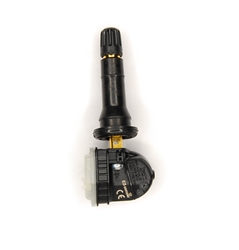

One of the diagnostic mantras preached by service experts today is “Test Before Touch.” Basically, you should always use a TPMS tool to activate and check the response signal from each tire pressure sensor in each wheel before you do anything else. This tire pressure monitoring sensor (for TPMS) has been manufactured to combine both 315 MHz and 433 MHz applications in one sensor. The vehicle owner does not understand how their TPMS system actually works. The tires were serviced or rotated recently and the relearn procedure was not done correctly. The TPMS module itself is not functioning properly or has failed because of a voltage supply, wiring or internal electronics fault. Only a simple cloning process is required for the RS to work in nearly every vehicle.

The TPMS module is not receiving a signal from one or more sensors because of an antenna or wiring fault. The TPMS sensor does not require any programming or configuration. Though the two sensors look completely different, the functions are the same. The Schrader 20153 rubber-valve snap-in sensor is the current original equipment replacement tire pressure monitoring sensor for the factory equipped the Siemens VDO SE53007. Here is a list of fitments for this sensor: Buick Allure 2008-2007. A TPMS sensor that is working intermittently due to a weak or failing battery. The Siemens VDO SE53007 supersedes to the Schrader 20153 Rubber-Valve Snap-In Sensor. The Schrader 20158 uses a clamp-in aluminum valve. A TPMS sensor that has stopped functioning because the battery has died. TPMS problems can include any of the following: If the light remains on after checking/inflating the tires, or if it flashes and remains illuminated, it may signal a TPMS problem that will require further diagnosis.

The light should illuminate when a tire is low, and should eventually go out after the low tire has been inflated to its recommended pressure.


 0 kommentar(er)
0 kommentar(er)
